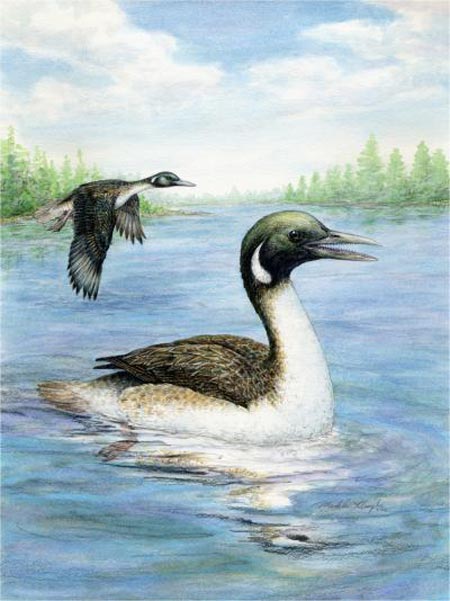Early Birds Were Just Ducky

If it looks like a duck and paddles like a duck, it must be a duck, right?
That's the conclusion of researchers who have discovered duck-like fossils of a new species of bird that might be one of the oldest ancestors of modern birds.
The finding, detailed in the June 16 issue of the journal Science, suggests that today's birds may have gotten their start lakeside.
Scientists discovered the remains of five extremely well preserved birds, named Gansus yumenensis, preserved in rocks of a dry lake bed in China. The skeletons were uncrushed and nearly complete, although no skulls were found.
Also preserved were the remains of foot webbing and feathers. The webbed feet and features of the leg bones indicate the bird paddled like a modern duck and dove for its prey much like today's loons, although probably not as adeptly.
"Gansus likely behaved much like its modern relatives, probably eating fish, insects and the occasional plant," said study co-author Jerald Harris of Dixie State College of Utah. "We won't have a definitive dietary answer until we find a skull."
At roughly 110 million years old, Gansus is the oldest known member of the lineage of birds called Ornithurae, which includes all modern birds, known as Neorthines. Ornithurae branched of the trunk of the avian tree of life, which has the proto-bird Archaeopteryx, during the Early Cretaceous between 140 million and 110 million years ago.
Get the world’s most fascinating discoveries delivered straight to your inbox.
Several other ancient ornithuran birds also seem to have led aquatic lifestyles, and the latest finding could force scientists to change their perspective on lifestyle of early birds. The authors note, however, that some birds likely made a quick return to living on land, as modern land lovers like the ostrich and chicken family have deep roots in the Cretaceous period.
- Gallery: Rare and Exotic Birds
- Gallery: Spot Today's Dinosaurs
- Top 10 Avian Ancestors: Dinosaurs that Learned to Fly
- Dinosaurs Mingled with Cousins of Ducks and Chickens
- The First Biplanes Were Dinosaurs
- Early Birds Had Dinosaur Feet
- A Brief History of Dinosaurs


